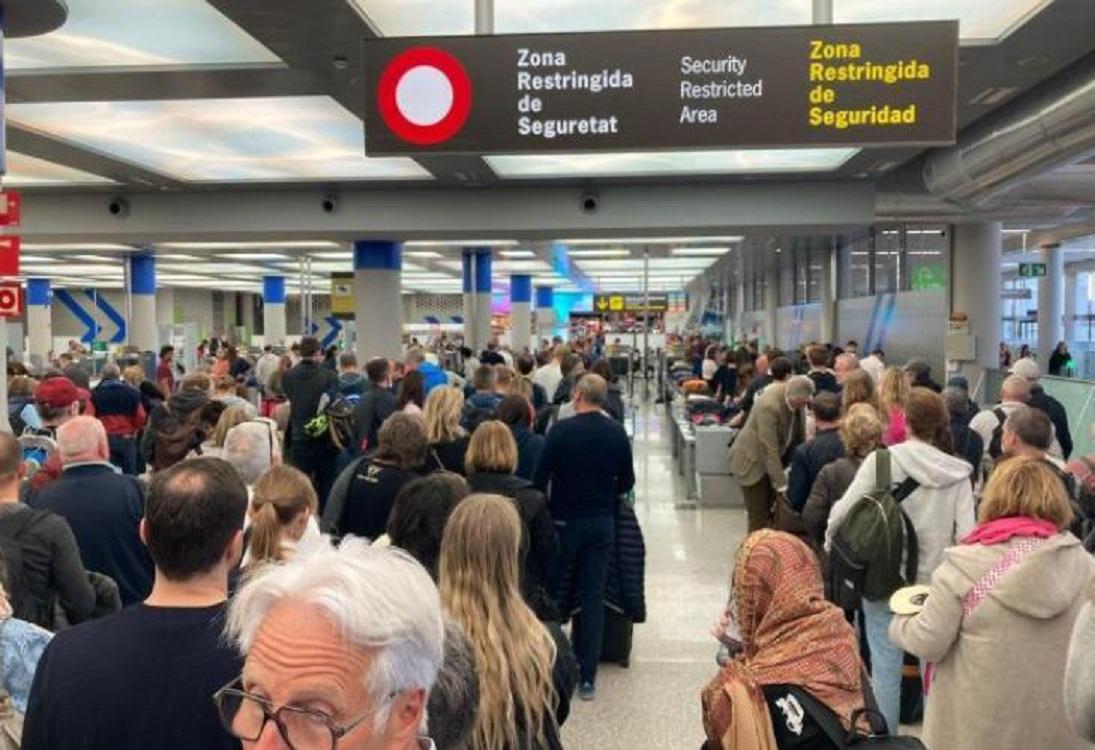They will also require either fingerprints or a photo to be taken when you leave. But you will no longer get a stamp in your passport. As a result of these developments, wait times at borders could be longer for Britons while countries and passengers get used to the new system.
In the update, the Government website warns: “From November 2024, you’ll get your fingerprints and photo taken when entering the Schengen area. You’ll get either your fingerprints or photo taken when you leave. You will not get a stamp in your passport. Queues at borders may be longer when these changes begin.”
The FCO goes on to state: If you are travelling to the Schengen area
When EES is introduced, you will need to create a digital record on your first visit to the Schengen area at the port or airport on arrival. You will be required to submit your fingerprints and have your photo taken at dedicated booths.
You will not need to provide any information before travelling to a Schengen area country.
If you are flying to a country in the Schengen area, you may experience longer queue times when you arrive at your destination.
At some ports and international stations (Dover, Eurotunnel and St Pancras), there may be increased wait times while EES registration is completed before passengers leave the UK. If you are travelling through one of these stations, you should check with your travel operator to find out whether EES will affect your journey.
Your digital record is valid for 3 years. If you enter the Schengen area again during this time, you will only need to provide a fingerprint or photo at the border, when you enter and exit.
Why the EU is introducing EES
EES is designed to improve border security within the EU and its neighbouring countries, and reduce illegal migration in the Schengen area. It will automate border control checks to help the EU stop visitors overstaying.
EES is part of wider work the EU is doing to strengthen their border security. In 2025, the EU will introduce the new European Travel Information and Authorisation System (ETIAS).
When ETIAS is introduced, you will need to apply for authorisation to enter Schengen area countries if using a UK passport. You will need to provide personal information and details about your trip, and pay a 7 Euro fee, as part of the authorisation process.
The EU has already set out more information on ETIAS, including what information will be required from each nationality, on the EU’s official Travel Europe website.
How EES will affect travelling to the Schengen area
The UK government has been working closely with the European Commission, member states, local authorities and the travel industry to prepare ports for EES. The government is supporting ports and carriers to ensure EES registration is simple for people travelling to the Schengen area.


4 comments
To be able to write a comment, you have to be registered and logged in
tranq tranquerThat's been up at least twice- and rejected! I believe it won't happen ever.
CompoIf you hold Spanish residency then it does not apply to you. I have never had my passport stamped at Palma but you need to be proactive. I always have my T.I.E. tucked into the photo page of my passport so it's the first thing the police officer sees.
When is the UK going to finally realise they need a national identitiy card system. Apart from travel benefits the actual roll out and application country wide will root out thousands and thousands of illegals who can be immediately removed. I too would like to see an answer to Compo's question.
Any knowledge as to whether this will be required if you have a uk passport but also have Spanish residency? Thus far, Palma control insists on stamping on some times but not on others. I am not sure they know the rules to be honest. But never an issue when in and out of France or the Netherlands